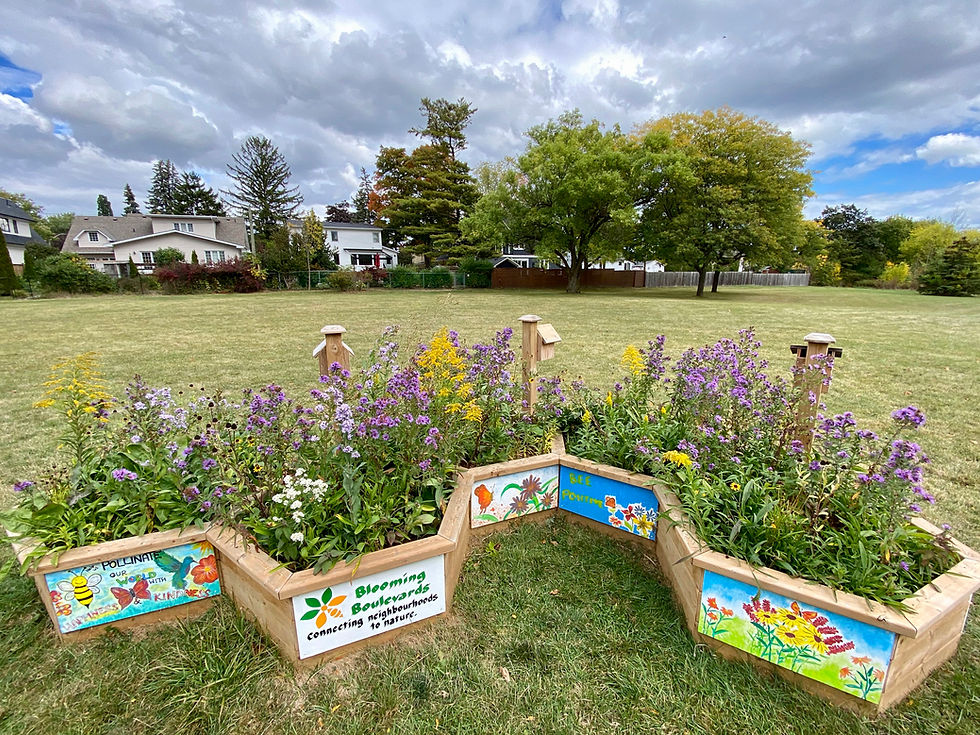Leaf mold - a gardener’s black gold
- Jeanne McRight

- Mar 15, 2022
- 3 min read
by Jeanne McRight
Safety note: Ticks do not live in finished leaf mold, but can be found in decaying piles of fallen leaves. See precautions about leaves and blacklegged (deer) ticks at the end of this article.
Why use leaf mold?
Although leaf mold is not rich in nutrients, this organic amendment makes clay and sandy soils spongier, holding both moisture and air — an ideal environment for plant roots. The ability of leaf mold to retain moisture is extraordinary. Subsoil can hold a mere 20 percent of its weight; good, rich topsoil will hold 60 percent, but leaf mold can retain 300 to 500 percent of its weight in water.
Leaf mold also stimulates biological activity in the soil, nurturing beneficial microorganisms that help thwart pests. Freshly fallen leaves pass through several stages from surface litter to well-decomposed humus partly mixed with mineral soil. Leaf mold from deciduous trees is somewhat richer in such mineral foods as potash and phosphorus than that from conifers. The nitrogen content varies from .2 to 5 percent.
When applied to the soil surface as mulch, leaf mold prevents extreme fluctuations in soil temperature, keeps the soil surface loose so water penetrates easily, and retains soil moisture by slowing water evaporation.

How to make leaf mold
It's easy to make leaf mold: All you need is leaves, a small storage spot outdoors, and time. Since I allow fallen leaves to remain in place on the ground to decay naturally in my yard, I import my neighbour's bagged leaves each fall and spring. I leave them where they are exposed to rain and snow, and by mid-summer the leaves have transformed into rich, brown, crumbly leaf mold.
When laid on top of the ground, leaf mold is an attractive and functional mulch. No digging is needed, which preserves soil microorganisms. Another plus: leaf mold is weed-free, except for occasional tree seedlings easily pulled.

Three ways to speed up the leaf mold process
1. Mix different kinds of leaves, giving decay microorganisms a variety of surface areas to work on.
2. Provide shade and water
Place wet leaves in black plastic bags where evaporation is reduced, so the leaves stay moist.
3. Add nitrogen
Carbon and nitrogen are the two foods the microorganisms need in greatest quantities. Autumn leaves are high in carbon, so the lack of nitrogen becomes the limiting element. High-nitrogen materials includes grass clippings, which can be mixed in with leaves after late-autumn mowings.
Precautions: Do you live in a tick-infested area?
I have never seen ticks in my urban garden but I take precautions nonetheless.
Deer ticks which carry Lyme disease can sometimes take shelter and breed in piles of leaves. Do not rake or blow leaves off lawns and create piles of leaves, especially at woodland edges where there might be deer. Best practices to discourage tick population increase include allowing leaves to quickly decompose on the ground where they fall or composting leaves in plastic bags. To protect yourself, wear long pants tucked into socks and long sleeves tucked into garden gloves. Inspect yourself carefully and wash your clothing after handling piles of leaves.
Find out more here: Natural Yards Can Help Fight Climate Change, But Watch For Ticks In The Leaves
Found an embedded tick? Check out this blog post, Help! I found a tick on me!









Comments